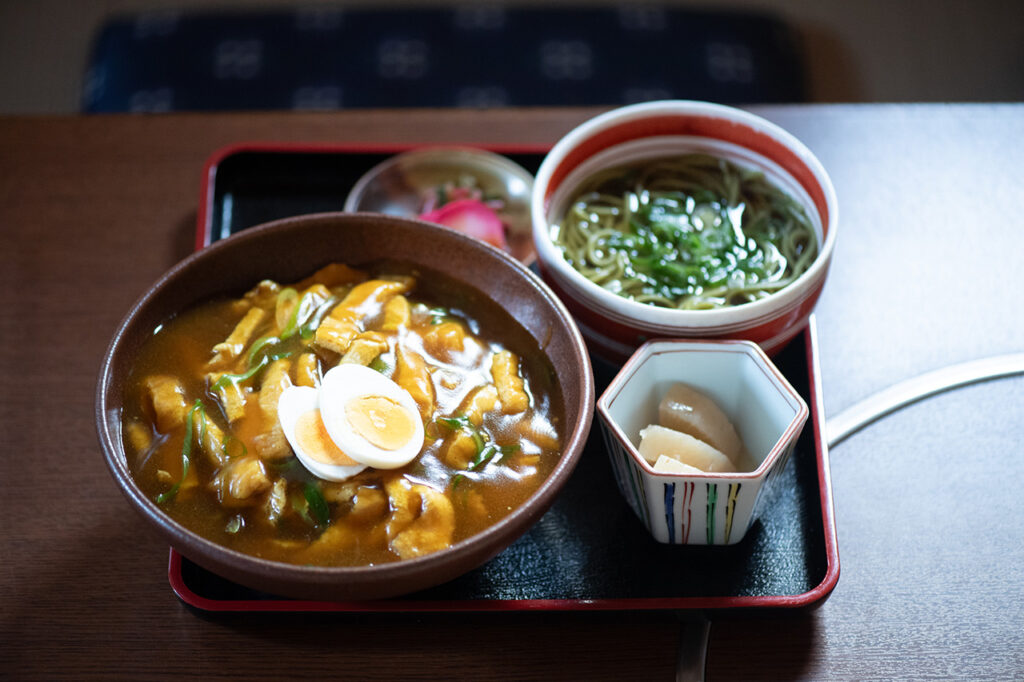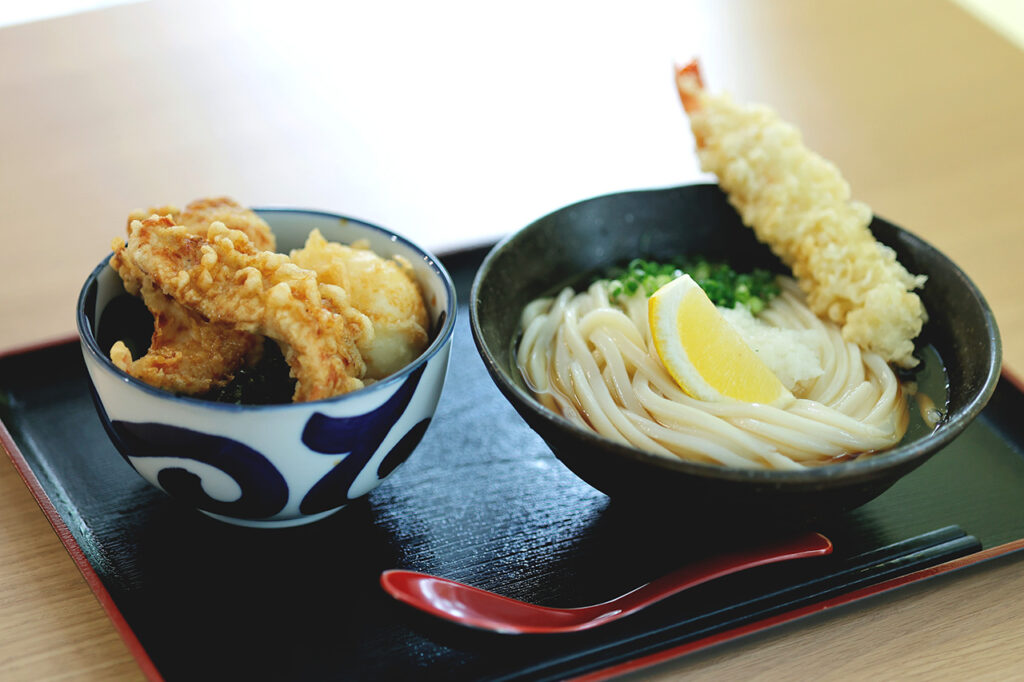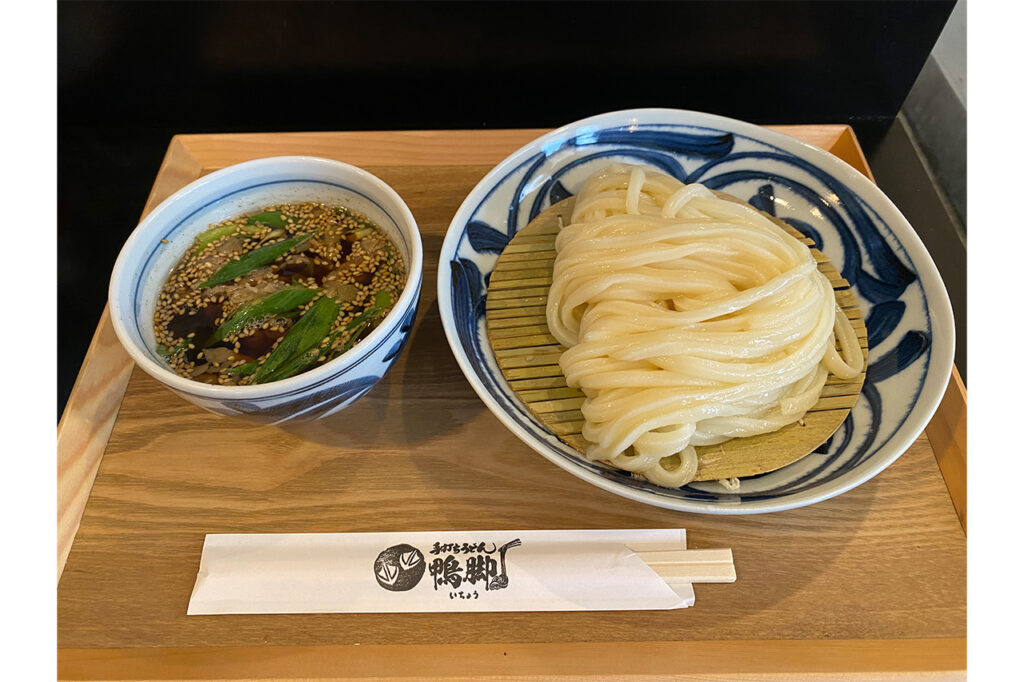
[2024] A tour of Kyoto's classic spots! Can't-miss pure coffee shops and retro ...


We have selected famous udon restaurants to visit with sightseeing spots during the autumn holiday season. From curry udon, which combines dashi and spices in harmony, to udon using seasonal ingredients, you are sure to find a bowl of udon that is filled with the specialties of each restaurant! As the weather turns chilly, warm up your body and soul with Kyoto's famous udon, a dish that will make your heart soar with the steamy air!
Yamamoto Menzo is the first name that comes to mind when one thinks of udon restaurants in Kyoto. Many people come from far and wide to enjoy the chewy, elastic noodles and the strong flavor of the broth. Since the restaurant is located near some of the city's most popular tourist spots, especially during the tourist season, it is best to call ahead to make a reservation before visiting the restaurant. There is also a take-out store near the restaurant, so you can enjoy udon noodles under the blue sky.

Kitsune udon 950 yen. Large fries soaked in broth are popular.

Founded in 1940, Kyo Udon Ikusoba Okakita continues to make udon noodles using only the finest ingredients, including buckwheat flour from the foot of Mount Hakusan in Ishikawa Prefecture. The dashi (broth) that is the core of Kyo udon is made using the techniques the founder learned during his 17 years of training, and it has a fine taste that brings out the full flavor of the ingredients. The ten-tomizushi udon is a bowl of thin, glossy, firm udon noodles tossed with a generous amount of egg and flavored with the broth.

Udon noodles with tenmizushi topping: 1,680 yen

In addition to homemade udon and soba, the restaurant is strongly particular about its ingredients, using only carefully selected Rishiri kelp and vegetables for its broth. The reason for her insistence on ingredients is that the proprietress, Misuzu, takes the health of her customers seriously. You can enjoy udon noodles that will warm your heart as well as your body. The prices are so reasonable that you will want to come back every day, and your pocketbook will be warmed as well.

Aged curry rice bowl set for 960 yen. Chazoba or Udon as a side menu.

Curry udon is a popular menu item at Kyoto Gion Okaru, which is frequented by celebrities. The soup is made by adding spices to the delicious seafood broth, and the toppings of your choice, such as cheese, tempura, and deep-fried tofu, are also appealing. Open until late at night, it is the perfect place to finish off a night of drinking.

Meat curry udon 1040 yen

Meidai Omen Ginkakuji Honten is located not far from Ginkakuji Temple. Omen is a local dish of Gunma Prefecture that is tsukemen-style with plenty of condiments. The dipping sauce, which is the key to the flavor, is made from carefully selected ingredients, including several kinds of Japanese shavings purchased from a shavings store in Kyoto. Enjoy the rich aroma of Japanese wheat noodles, which are carefully pounded by artisans, with the dipping sauce made with ingredients from Kyoto.

Rice noodle 1280yen

The signature dish at Fumiya Nishiki, located in Nishiki Market, is Fumiya nabe. It is a nabeyaki udon filled with various ingredients, rice cakes made from glutinous rice produced in Shiga Prefecture, tempura with ingredients wrapped in a thick batter, and boiled shiitake mushrooms made from logs, all handmade by craftspeople. Enjoy a cup of sake, a favorite in Kyoto for more than 50 years, in a modern restaurant filled with the warmth of wood.

Fumiie hot pot 880 yen

Mimatsu Noodle Shop is run by Kimitaka Nagae, the third generation of an udon store established in Imabari City, Ehime Prefecture in 1950. He learned the homemade noodles and broth from his grandfather. He cooks iriko (dried sardines) out of water for about 12 hours at a temperature of less than 70 degrees Celsius, and adds dried bonito flakes and other ingredients. The noodles are made with flour from Kagawa Prefecture and have a good firmness. Taste the Imabari udon, which was handed down from his grandfather, recreated in Kyoto, along with shrimp tempura and a refreshing lemon flavor.

Shrimp tempura bukkake udon with mini oyakotendon (rice topped with chicken and egg) for 1,330 yen

[Kendon-ya is located near Fushimi Inari Station, which is crowded with visitors to the Fushimi Inari Taisha shrine. The winter special is the Kitsune Ankake Udon (udon noodles with starchy sauce) topped with a large piece of deep-fried tofu. The fried tofu comes from a tofu store in Kyoto that the owner fell in love with at first sight. The homemade noodles, made from a blend of Australian and Mie Prefecture flour, are boiled in a pressure cooker and steamed for a long time, giving them a chewy texture. The owner himself uses carefully selected ingredients to make the broth every morning.

Ankake with fox sauce 920 yen

Minehachi is popular for its curry udon noodles with a refined aroma of Japanese soup stock. The Curry Udon with Beef Sueji Stew is made by boiling carefully selected Japanese beef sinew three times and simmering it in a Japanese-style curry broth made with Rishiri kelp and an original blend of shavings. You can enjoy the melt-in-your-mouth texture of the beef tendon, the deep flavor of the curry broth, and the moderate firmness and smoothness of the thin udon noodles. The wide selection of toppings is another great point.

Curry udon with stewed beef tendon 950 yen

Ajimika was started in 1969 by the previous owner, Kokichi Shimada, and has grown to become a popular restaurant loved by tourists. The curry udon of Kyoto is made by blending 11 spices in a special broth and adding potato starch in a starchy sauce style. Enjoy the harmony of the deep flavor of the broth and the spiced curry, which is made with the perfect balance of kombu and dried bonito flakes, mirin (sweet cooking sake), soy sauce, and salt.

Kitsune Curry Udon Ajika 1250 yen

Echigoya, a dried bonito flakes store in Fushimi Ward, opened Kyo Curry Udon ECHIGOYA in 2023 to share Kyoto's traditional dashi culture. As an udon store born from a dried bonito flakes store, ECHIGOYA's dashi, which is made from freshly shaved bonito flakes and natural kelp, is a special taste that cannot be found at any other udon store. Enjoy the next generation of curry udon, where the dashi and curry spices are in perfect balance, in the stylish white walls of the restaurant.

Meat curry udon (1,280 yen) and rice with dried bonito flakes (with hot egg) 380 yen. The noodles are made with Sanuki no Yume, a wheat grown in Kagawa Prefecture, and are soft and firm.

[Despite having just opened in July 2024, Teuchi Udon Kamojiki is already attracting attention as one of Kyoto's most popular udon restaurants. The reason for this is the handmade noodles, which is also in the name of the restaurant. The owner, who has trained at numerous udon restaurants, kneads the noodles by hand every morning. Children's tableware is available, so families with small children can feel at ease. Families can enjoy seasonal ingredients and firm noodles.

Tsukemen (dipping noodles): 1,100 yen. Handmade udon noodles in a sweet broth with plenty of sesame seeds, Kujo green onions from Makimura Farm, and Japanese black beef.

Kyoto Shijo Kuon is located in a machiya that was once a kimono store. Enjoy the harmony of the authentic and deep curry with over 20 spices and thin udon noodles made from a blend of Japanese wheat and roasted germ. The dish can be enjoyed in a variety of ways, such as adding otsuyu (soy sauce) to the udon or topping the keema curry with barley rice topped with an egg yolk.

Japanese Kashiwa Keema Udon skewers with five kinds of tempura, 1980 yen

Authentic handmade udon Okawa offers a menu full of hearty toppings, so you should come hungry. The dreamy udon topped with shrimp, bamboo rings, and chicken is the Okawamori bukkake, a popular menu item at this restaurant. The owner, who honed his skills at a popular Sanuki udon restaurant in Takamatsu City, Kagawa Prefecture, handmade the soft udon and serves it with gorgeous tempura.

Okkeshi makkake 1430 yen

San-Shiki Udon Noodles was opened by the owner, who hails from Kagawa Prefecture. The noodles are made by letting the dough rest overnight at a low temperature, which makes them smooth and pleasant to the palate. Kashiwa-ten bukkake is a dish of large chicken tempura topped with ume plum paste and a dashi broth with a small amount of iriko (dried sardines) to suit Kyotoites' tastes. Kagawa soy sauce is used as the secret ingredient, allowing customers to enjoy the fusion of the culinary cultures of Kagawa, the prefecture of udon, and Kyoto.

Kashiwa-ten bukkake 770 yen

Over 600 interviews per year! An order site carefully selected by the editors who knows Kyoto and Shiga.
nowOfficial LINE friend registration500 yen OFF coupon is being issued!
Distributed every Friday morning at 8:00 am! From new restaurant information to event information that we want to share with you, We deliver articles about Kyoto that are useful to know. About 20,000 people have registered.Click here to add a friend!
 News
News Feature article
Feature article Featured event
Featured event